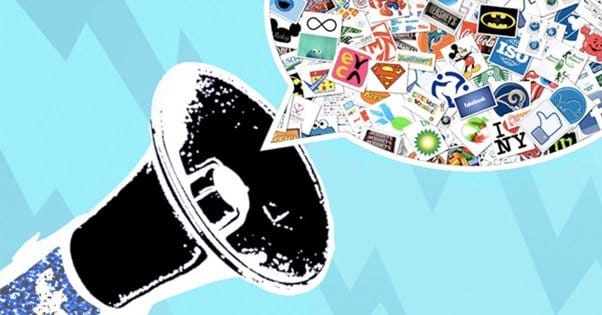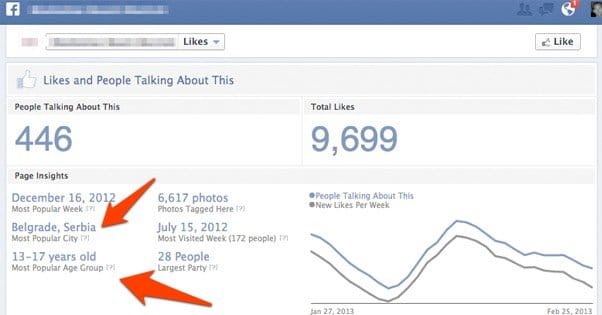 Written by ContentPowered.com
Written by ContentPowered.com
Marketing online is an ever-changing monster you have to wrestle into submission in order to get any traction with an audience. Giants like Google and Facebook make changes to how their platform works, and it’s up to businesses like yours and mine to adapt or die.
We’re now five months into 2015, which is plenty of time for a few big changes to happen to Facebook marketing. Let’s take a look back and see how things have changed, and see if we can make any predictions about the future.
Flexibility in Low Stream Users
This is a relatively minor change. You’ve probably seen the statistic floating around that, if not for Facebook’s filter, the average user would be flooded with around 1,500 stories every day. Facebook prunes that flood down to the manageable trickle of just 300 or so per day.
This change Facebook made only applies to users who have very little content they see. So, users with very few friends and very few businesses they follow. Formerly, these people would see their feeds stagnate for hours or days with no new content, even if the pages they followed had posted new content in the mean time.
Now, Facebook is allowing these users to see more brand content to fill up space, when that space is available.
So, like I said, a relatively minor change. Brands don’t typically have a lot of followers who follow very few other people, so while you might see an incredibly minor increase in organic reach from this change, it will be barely noticeable.
Friends > Brands
The second change, announced in the same post as the first change, is a bit worse for brands. Essentially, Facebook polled their users and they determined that the average user would prefer to see content from their friends rather than content from brands.
It sounds like common sense, but there’s a delicate balance to strike. If brand posts lose too much visibility, brands will leave the site entirely. On the other hand, if brands supersede friends and family in the news feed, users will leave, because their platform has become more advertising and less social network.
This change is a tweak to the weights of brand content versus friend content. Facebook is promoting content from friends over content from brands, all other things being equal. Now, a user with high engagement with a brand is still going to see more of that brand’s posts than posts by a friend they don’t talk to or interact with. Nothing has changed there. It’s just a little harder for brands to get that attention.
Goodbye Viral Reach
Viral reach is defined as the people who see your post based on an action taken by someone else who saw your post. So if you make a post, and Steve likes it, and Steve’s friend Jane sees that action and thus sees your post, that’s one person exposed via viral reach.
One thing Facebook noticed in the same poll as the two previous changes is that users disliked seeing these basic “X has liked Y’s post” announcements, or “X has commented on Y’s post” notifications.
As a personal user, I have to agree, for one primary reason; often times, privacy settings are such that when I see one of those posts, I can’t interact with it. If my friend leaves a comment on a popular post, I can’t find that comment to read it. I also often can’t leave a comment of my own without following the page in question.
Therefore, Facebook is limiting the visibility of such notifications. Users will see less of them, which from a brand perspective, means less viral reach. You’ll have to work through Facebook’s best practices to make up the difference.
Promotion Hurts
This one was announced in November of 2014, but it didn’t technically take effect until January 1, so I consider it a change for this year.
Facebook is cracking down more heavily than ever on promotional language in the organic news feed. They have always frowned upon overly promotional language, but they’re taking it one step further and actively demoting posts that they deem too promotional.
Now, a lot of marketers have gone overboard in thinking that they can’t even hint at selling a product without risking a ban. This isn’t true. In fact, you can actually be pretty darn self-promotional, so long as your posts contain something other than just the promotion. Facebook’s definition of promotional posts, seen at the link above, is:
- Posts that solely push people to buy a product or install an app.
- Posts that push people to enter promotions and sweepstakes with no real contest.
- Posts that reuse the exact same content from ads.
So, you know, avoid doing that. Users don’t like being subjected to commercials in their news feeds anyways, so it’s always better to be more social than it is to be promotional. Oh, and if you need examples, Facebook provides some at the link.
Fighting Fake Likes
Facebook has always been fighting fake likes, but it’s hard for them to identify and remove all fake activity. There’s just so much of it, and like the constant back-and-forth between Google and Black Hat SEO, Facebook and Fake Likes go back and forth.
Facebook announced new changes and new steps they’re taking to help minimize and remove fake likes. These steps include more advanced pattern recognition to identify and block click farms, notifying admins of fake like removal directly, and providing instructions to protect your brand from fake likes.
Not All Doom and Gloom
One more positive change made this year so far has been the advent of video advertising for brands. Facebook recently released Anthology, a method for brands to tell stories and advertise through video content native to Facebook.
This is a relatively new feature, so brands are still getting used to it and learning how to use it more effectively. Expect a lot more detail in the coming months.

